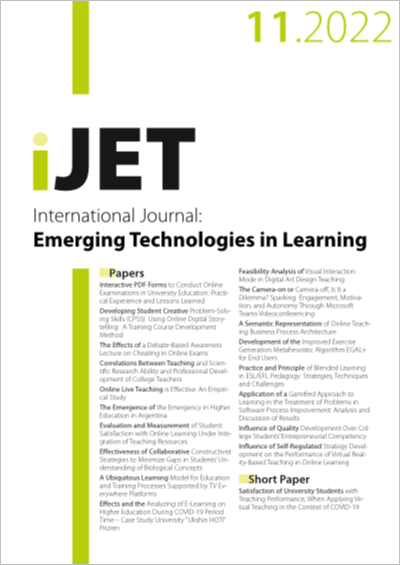Evaluation and Measurement of Student Satisfaction with Online Learning Under Integration of Teaching Resources
DOI:
https://doi.org/10.3991/ijet.v17i11.32037Keywords:
integration of teaching resources, online learning, learning satisfactionAbstract
The effective organization and integration of educational resources can solve the information confusion in online learning, and assist online teaching platforms in recommending multisource personalized learning resources. After the integration of teaching resources, the student satisfaction with online learning should be evaluated, setting the stage for the management and application of teaching resources, as well as the improvement of online teaching quality. Therefore, this paper evaluates and measures student satisfaction with online learning under the integration of teaching resources. Specifically, the name and descriptive features of the Japanese teaching resource library were extracted by the linguistic model, the class structure features and relationship attribute features of the library were learned by graph convolutional neural network (GCNN), and the corresponding eigenvectors were obtained. Next, the similarity of different features was calculated, the teaching resources were sorted, and the matching resources were selected, completing resource integration. After feature integration, the student satisfaction with online learning was evaluated, and a structural equation model (SEM) was established for the student satisfaction with online learning under the integration of teaching resources. The effectiveness of our model was proved through experiments.
Downloads
Published
How to Cite
Issue
Section
License
Copyright (c) 2022 Nan Zhang (Submitter); Honglei Wang

This work is licensed under a Creative Commons Attribution 4.0 International License.



